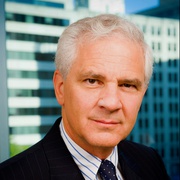
President Barack Obama steps off Air Force One as he arrives in Hanoi, Vietnam, Sunday, May 22, 2016. Na Son Nguyen/AP
The Nuclear Football Goes to Japan
Obama will have the power of 22,000 Hiroshimas in the suitcase his aide carries with him. He still has time to change.
When President Barack Obama goes to Hiroshima May 27, it will also mark the first visit by the nuclear football.
The “football”—officially known as the president’s emergency satchel—is the briefcase carried by military aides who follow U.S. presidents wherever they go. It contains the codes and commands for launching nearly 1,000 nuclear weapons within minutes.
It took 5 hours and 30 minutes for a B-29 bomber to fly from the island of Tinian to Hiroshima, 71 years ago, and drop the first nuclear bomb in history. At Hiroshima this week, Obama will have at his fingertips the ability to launch the equivalent of 22,000 Hiroshimas in about 30 minutes.
The United States maintains about 975 nuclear warheads on “hard alert,” according to Hans Kristensen of the Federation of American Scientists. This includes 435 intercontinental ballistic missiles, or ICBMs, with as many warheads, and 120 submarine-launched ballistic missiles, or SLBMs, carrying some 540 warheads, for a total of 555 missiles with 975 nuclear warheads. Each warhead is between 6 and 30 times more powerful than the bomb that leveled Hiroshima.
The ICBMs can be launched within 5 minutes; SLBMs in about 12 minutes. It takes each missile 30 minutes or less to reach its target. The total yield of this force is about 330 megatons, or 22,000 Hiroshima bombs.
This is an insane level of destructive power. If ever exercised, it would end human civilization.
It is not even the total U.S. nuclear force. There are 6,000 more warheads on other missiles, on bombers, in reserve, or awaiting dismantlement.
The president’s visit is one more chance for him to restore some sanity to America’s nuclear posture. But he may pass up the opportunity.
The visit to Hiroshima is rich in symbolism and political import. His aides, however, have indicated it will be light on substance. It is not the place, some say, to make a detailed policy speech.
Nor will this be the president’s last chance to change nuclear policy. He will have other opportunities, most importantly in his speech to the United Nation’s General Assembly in September.
Still, Hiroshima will be the emotional endpoint to the nuclear policy efforts he began in his Prague speech seven years ago. Will he make the most of this moment?
Obama has said that he will only make brief remarks and speak on the nature of war in general. President Abraham Lincoln’s remarks at Gettysburg were also brief, a mere 10 sentences. He also spoke on the nature of war in general. You can say a lot in a short time.
At a minimum, Obama should reaffirm his vision of the peace and security of a world without nuclear weapons. There are many in Washington who do not agree with this goal, including his appointees at the Pentagon. It will be important to assert, as he did in Prague, the catastrophic risks nuclear weapons present. He could affirm, as he did in Berlin three years ago, “so long as nuclear weapons exist, we are not truly safe.”
This would be powerful. But he should do more. The president could take a few steps to reduce the risks of nuclear disaster.
- He could, with one sentence, end the requirement that our nuclear weapons be ready to launch within minutes. This is an obsolete Cold War doctrine that has no place in the 21st Century.
- He could take a least 50 ICBMs off of alert. These are the weapons scheduled for deactivation under the New START treaty. He could take them off alert now, and ask the Russians to make a reciprocal step, starting a process that could pull us back from the nuclear brink.
- He could take a small step to stop the $1 trillion in contracts he has ordered for a new generation of nuclear weapons by canceling the $30 billion new nuclear cruise missile – the least necessary and most destabilizing of the suite of new weapons now planned.
- He could pledge go to the United Nations Security Council and seek new resolutions against all nuclear tests and increasing our ability to detect such tests.
- Finally, he could encourage all members of Congress to visit Hiroshima. Before they spend $1 trillion on thousands of new weapons, they should experience what just one small nuclear bomb can do.
Even after taking these steps, this small nuclear briefcase will still control enough power to destroy most human life on the planet.
Before he passes the football to his successor, Obama shouldn’t fumble his chance to reduce the risk that it will ever be used.


